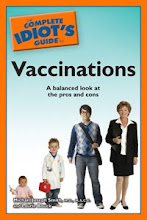The CDC is issuing a fresh warning this month about hepatitis C in Baby Boomers (those born between 1945 and 1965) as infection rates rise in this population. According to Medline Plus, the hepatitis C virus has infected 1 out of every 30 Baby Boomers ("Test All Baby Boomers for Hepatitis C: CDC").
Hepatitis C is spread through contact with infected blood or, more rarely, through sexual contact. Left untreated, it can cause cirrhosis of the liver and liver cancer, and death rates from the infection are rising. Roughly 3.2 million Americans are infected with hepatitis C, according to the CDC's public fact sheet on the disease. Often, however, people are unaware that they are infected until the disease has already damaged the liver. The virus can be detected with blood tests.
Vaccines are available to prevent hepatitis A, an acute liver infection which usually resolves on its own, and hepatitis B, an acute or chronic liver infection which can lead to liver problems. There is no vaccine for hepatitis C, but there are several treatments currently available with a high cure rate.
Because the disease affects such a large population, and the CDC is now recommending widespread testing for it, the incentives are high for pharmaceutical companies to develop more effective
treatments for hepatitis C with fewer side effects than the current
options. Sales of drugs used to suppress viruses rose nine percent in 2011, according to an article by Noah Pines on the website Medical Marketing and Media. One analyst predicts that treatments currently being used for hepatitis C and those under development could ultimately net $10 billion in sales five years from now, Pines wrote ("MM&M Therapeutic Focus: Infectious Diseases").
Monday, August 27, 2012
Subscribe to:
Posts (Atom)



